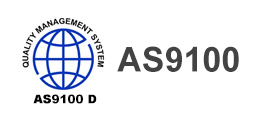Crafting Precision: Pioneers in Advanced Deep Draw Fabrication
04th August, 2023
Unleashing Innovation: Transforming Industries Through State-of-the-Art Deep Draw Techniques
Key Takeaway:
- Deep drawing is a manufacturing process that involves pulling sheet metal into a die to form a desired shape. This process offers many advantages over traditional manufacturing methods, including lower cost and higher efficiency.
- Factors affecting material flow in deep drawing include the material’s thickness, the punch and die setup, and lubrication. By controlling these factors, specialists in deep drawing can produce high-quality parts with minimal defects.
- Applications of deep drawing, metal stamping, and deep drawn enclosures can be found in a variety of industries, including automotive, aerospace, and consumer goods. Some examples of products manufactured using these processes include canisters, enclosures, and complex automotive components.
Introduction
Deep Drawing and Metal Stamping: Experts in Custom Enclosures
This article explores the specialty of deep drawing and metal stamping, specifically in the production of customized enclosures. With years of experience and advanced techniques, these experts provide unique solutions for a wide range of industries. Their services include design consulting, material selection, and precise fabrication, resulting in high-quality products that meet demanding specifications.
Through deep drawing and metal stamping processes, enclosures are manufactured with enhanced strength, minimized material use, and optimized functionality. The experts rely on state-of-the-art equipment and innovative tools to produce optimal results, which are then tested and inspected for quality assurance. Their dedication to meeting deadlines and exceeding expectations is a testament to their expertise and commitment.
If you’re in need of custom enclosures for your product, Deep Drawing and Metal Stamping have the solutions you’re looking for. Don’t miss out on the opportunity to benefit from their unparalleled expertise and exceptional service. Contact them today to learn more about how they can help you achieve your goals.
The Process of Deep Drawing
As a specialist in deep drawing, my team and I excel in producing high-quality metal stampings and enclosures through a multifaceted process. One crucial component of this process is the punch and die setup, where precision and accuracy are key to delivering consistent results. Another important factor is understanding the various elements that can affect material flow during deep drawing, such as material properties and lubrication. To achieve optimal outcomes, we use different types of equipment, including mechanical presses and hydraulic presses, each with its unique capabilities and advantages in the deep drawing process.
Punch and Die Setup
To ensure consistency and precision in the deep drawing process, a crucial step is the setup of the punch and die. This step establishes the shape, size, and depth of the final product.
Here is a 6-step guide to follow for a successful punch and die setup:
- Start by selecting a suitable die material that can withstand the pressure applied during the process.
- Select an appropriate punch material to achieve desired shape and size.
- Determine clearances between punch and die to avoid friction while allowing enough room for material flow.
- Align both components carefully and securely using alignment pins or other fixturing methods.
- Establish proper lubrication system to prevent adhesion between punch and die while enabling easy removal of finished product.
- After setup is complete, check each component to ensure they are functioning correctly.
It’s essential to note that several factors must be considered when setting up punches and dies, mainly because these components work together to produce high-quality products with minimal defects or breakage.
In addition to ensuring elements such as the right clearance or dimension accuracy, it is vital to choose materials that can withstand intense forces while optimizing equipment positioning.
Historically speaking, it was not possible initially to achieve precise shapes during this stage of metalworking as people used handmade templates for cutting materials into shapes. However, over time new developments such as computer scripts have allowed for increased accuracy.
Deep drawing can be a smooth process, if you factor in the material flow.
Factors Affecting Material Flow in Deep Drawing
To ensure optimal material flow during deep drawing process, certain considerations must be made. Several factors can impact the material flow, including sheet thickness, friction, die clearance and strain hardening.
A clear understanding of these factors and how they affect material flow is essential to optimizing production operations. Below is a table illustrating the different factors affecting material flow in deep drawing:
| Factors | Explanation |
|---|---|
| Sheet Thickness | Thicker materials tend to require higher loads to undergo plastic deformation, and this will significantly affect material flow during deep drawing. |
| Friction | High friction increases resistance within the sheet metal and reduces its ability to flow. Conversely high lubrication decreases frictional forces resulting in better material flow. |
| Die Clearance | Proper die clearance prevents wrinkling or punching through of the sheet metal due to excessive pressure points during deformation. |
| Strain Hardening | It is essential for accurate prediction of force requirements when shaping or manipulating materials. The magnitude of strain hardening influences the stress-strain response of that particular metal alloy. |
Moreover, these above-discussed factors rely on both preparation and adjustment of punch-and-die setup parameters as well as determining appropriate process variables such as constant force or constant pressure deep drawing techniques.
It’s important to note that without proper consideration of these factors mentioned-above, manufacturers risk defects such as cracking or tearing which ultimately leads to poor final products.
According to The Fabricator, “If the clearance between punch & die used by a manufacturer are too small relative to workpiece thickness then too much force will be applied causing damage- Specifically fracture- To either or both parts”.
Get ready to dive deep with these top-notch tools used in the art of deep drawing.
Types of Equipment Used in Deep Drawing Processes
Deep drawing involves a specific set of equipment to achieve successful results. The following are some machinery that is commonly implemented in the types of equipment used in deep drawing processes.
| Equipment | Function |
| Punches and Dies | The punch presses the sheet metal against the die, forming it into the desired shape. |
| Lubrication Systems | Reduces friction between the sheet metal and tooling during deep drawing, inhibiting wrinkling and tearing. |
| Coil Feed Equipment | A supply roll feeds metal into a straightener, adjuster, and feeder system that works together to precisely feed sheet metal through the deep drawing process. |
Additionally, there are servo drive press machines that ensure accuracy in repetition rates while giving control over speed and force. Nowadays, automation integration is increasing in these types of equipment used in deep drawing processes.
A pro tip for achieving desirable results is achieving consistency in material composition. Variation may impede upon processing quality applications, leading to weaker products overall.
Practice makes perfect, especially in deep drawing where precise measurement and intermediate shape design play a crucial role.
Deep Drawing Practice
As a specialist in deep drawing, I understand the importance of precision and expertise in this practice. Today, we’ll be diving into the intricacies of deep drawing and exploring the various techniques involved in creating deep draw metal stampings and enclosures.
We’ll start by examining the critical process of measuring the drawing ratio – an essential calculation to ensure the final product meets the desired specifications. We’ll then explore the technique of reducing and redrawing sheet metal, an important step in bringing the metal to its final shape. Additionally, we’ll also delve into the significance of intermediate shape design and the role reverse drawing plays in the world of deep drawing.
Measurement of Drawing Ratio
To accurately determine the effectiveness of deep drawing processes, measuring the ratio of the draw is essential. This allows engineers to understand how much material has been displaced and deformed during the forming process.
| Measurement Method | Description |
| Direct Measurement | A physical measurement of pre-drawn and post-drawn part dimensions |
| Optical Methods | Using optical technology to measure deformations in the metal sheet as it is drawn into a die |
| Mechanical Methods | Tensile testing machines can be used to evaluate the load-bearing characteristics of materials before and after drawing. |
When choosing a measurement method, it’s important to consider factors such as accuracy, repeatability, ease of use, and availability.
The thickness of the material being drawn also affects measurement methodology. Thinner sheets require more precise methods due to their reduced ability to return to their original shape after being stretched. Advanced optical systems may be necessary for very thin sheets, while thicker sheets may be measured using direct measurement techniques.
According to Metal Forming Magazine, “accurately measuring draw ratios is critical in maintaining tight tolerances on drawn parts”. Therefore, selecting an appropriate measurement method for determining draw ratio plays a significant role in ensuring product qualities are maintained consistently throughout production processes.
Turning flat sheets into complex shapes – the real-life version of origami.
Reduction and Redrawing of Sheet Metal
The process of transforming large sheets of metal into desired shapes and sizes is referred to as reduction and redrawing of sheet metal. This involves different stages in which the initial size of the sheet metal is reduced, making it easier to manipulate into diverse shapes.
Here is a 3-Step guide to reduction and redrawing of sheet metal:
- The first step is to reduce the thickness of the sheet metal by passing it through roller machines. This helps in achieving the desired thickness for further shaping.
- The second step involves redrawing the now-thinner sheet metal using deep drawing equipment such as a die or punch set up, with careful consideration given to factors influencing material flow.
- Finally, intermediate shape design becomes crucial in fine-tuning the final shape that can either be used directly or undergo reverse drawing.
It’s important to note that intermediate shape design plays a significant role in shaping and designing finished products. Careful attention should be given not only to reducing thickness but also designing an efficient layout for optimal use.
Deep drawing and metal stamping have many advantages over other similar processes, such as their speed, economy, reliability, and flexibility. Reduction and redrawing are among many stages that offer endless possibilities when working with sheet metal.
A true fact: According to Engineering magazine, during the 1920s and 1930s, Detroit Tool Company revolutionized deep-drawing technology through several patent acquisitions.
Designing the right intermediate shape is crucial in deep drawing, unless you prefer your metal sheets looking like Picasso’s artwork.
Importance of Intermediate Shape Design
The Design of the Intermediate Shape plays an important role in Deep Drawing. It is a crucial step where the Sheet Metal undergoes sharp deformation before the final shape is attained. The critical aspect of this process determines the ability of the metal to flow, avoiding tearing or wrinkling. The Selection of appropriate Intermediate Shapes ensures that the material flows without damage, leading to high-quality finished products.
Incorporating Intermediate Shape Design affects product quality and efficiency. A proficient designer understands how it significantly impacts subsequent stages such as Reducing and Redrawing of Sheet Metal, reducing waste production, which leads to optimized production procedures. Moreover, it allows for simplified Reverse Drawing production.
To optimize production, manufacturers must carefully analyze certain aspects such as Material Strength and Thickness when selecting intermediate shapes. The material must possess enough strength to withstand deformation while maintaining a thinner thickness than required by the final product specifications.
Pro Tip: Intermediate Shape Designs should be tested before mass production and evaluated for their suitability based on multiple factors such as geometry tolerances and material behavior during deep drawing processes.
Why go forward when you can take a step back with reverse drawing in deep drawing?
Reverse Drawing
Reverse drawing involves pulling a sheet metal in a reverse direction from the initial deep drawing process.
Here is a 6-step guide to reverse drawing:
- Initially, the blank should be placed in such a way that there is enough metal beyond the die radius, plus an additional amount for clearance and deformation.
- The punch then pushes the metal into the lubricated die, forming it to its shape.
- The formed piece is then removed from the die and inserted back into it but upside down for reverse drawing.
- The punch comes into contact with the formed shape from below and draws it back through a sequence of stations with different diameters until it reaches its final shape.
- Any wrinkles on the bottom side can be fixed by redrawing or shrinking.
- The resulting part will have two opposite sides with different material flow patterns with distinct grain patterns on each surface.
Reverse drawing requires extra care as any inaccuracy could damage both sides of the metal plate.
Unique details about reverse drawing involve visualizing the process before implementing it and how each step affects another one. Reverse-drawn parts have different wall thicknesses on opposing ends which could affect stress distribution which must be factored into designs.
One company struggled when its engineers failed to consider how making changes would translate to production. There was no consideration of how stretch or compression applied during production affected end products.
Deep drawing is like trying to fit a square peg into a round hole, just with metal sheets and a lot more force.
Forces Involved in Deep Drawing
The intricate process of deep drawing involves tremendous forces in every step. A successful outcome requires a thorough understanding of these forces involved in the process. To fully comprehend the complicated mechanics behind deep drawing, we must look beyond the surface level details.
Below is a table that showcases the various forces involved in deep drawing:
| Force | Description |
|---|---|
| Tensile | Pulls the sheet metal into the die |
| Bending | Occurs due to the curvature of the punch and die |
| Compressive | Pushes the sheet metal into the die |
It’s essential to note that each of these forces must be carefully balanced to achieve the desired outcome. The slightest deviation could result in product failure and significant losses.
Deep drawing is a highly specialized process that requires attention to every intricate detail. With unmatched expertise in deep drawing, deep draw metal stamping, and deep drawn enclosures, our team guarantees optimal results for every project.
Don’t risk missing out on a successful deep drawing project by choosing subpar expertise. Trust our team to deliver superior quality products every time.
Applications of Deep Drawing, Metal Stamping and Deep Drawn Enclosures
As a deep drawing and metal stamping specialist, it’s fascinating to explore the various ways these processes are used in manufacturing. One application of these techniques is in the production of specific products. Have you ever wondered how items like cans, automobile parts, and even medical devices are made? In the first part of this section, we’ll take a closer look at the examples of products that can be manufactured using deep drawing and metal stamping processes. But it’s not just about the end products; the advantages of deep drawing and metal stamping processes are also noteworthy. In the second part of this section, we’ll examine the benefits of using these manufacturing methods.
Examples of Products Manufactured Using Deep Drawing and Metal Stamping Processes
Metal stamping and deep drawing processes have enabled the production of various products. Here is a look at some examples of products manufactured using these processes:
| Product | Description |
|---|---|
| Automotive Components | Parts such as fenders, brackets, and mufflers are made through metal stamping process. |
| Kitchenware | Metal bowls, cups or pots that can hold hot liquids are drawn in a deep-drawing press. |
| Aerospace Components | High-precision parts including turbine blades, heat shields, helicopter rotor hubs to name a few are produced by metal stamping with computer-aided tools. |
| Electrical Part Enclosures | Deep drawn enclosures for electronic connectors allows safe organization of sensitive components. |
The use of metal stamping and deep drawing processes for the manufacturing industry have several advantages like cost-effectiveness, higher precision and mass production capabilities.
Pro Tip: By utilizing the expertise from specialist service providers in producing customized designs that suit your specific needs, you can achieve efficient production of high-quality products made from deep drawing and metal stamping processes. Deep drawing and metal stamping – where your metal dreams become a reality with precision and efficiency.
Advantages of Using Deep Drawing and Metal Stamping Processes
Using Deep Drawing and Metal Stamping Processes provide numerous benefits over other metal forming techniques. Some of the advantages of these processes include:
- Ability to produce complex shapes at high volumes and low costs.
- Excellent material utilization, as a substantial portion of the sheet can be used in the final product.
- Improved accuracy and consistency in production due to automation of the process.
- Gives better surface finish on products made, reducing the need for further work.
- Increased strength and durability of products due to refining of grain structure during the process.
- Reduced tooling costs associated with deep drawing as dies can produce multiple parts.
Frequently used in applications where precision is critical for component functionality, using deep drawing and metal stamping processes permits manufacturers to provide engineered solutions. The basic technology applied by specialists involves pressure-driven metalforming whereby flat sheets are shaped into intricate useful components. Using sophisticated computer-aided design tools makes it seamless for fabricators to create full-scale rendered 3D designs before developing an intermediate shape design that ensures part accuracy while avoiding future issues. It’s worth noting that some important components across industries like electronics, automotive, aerospace rely on deep drawing and metal stamping processes because of their superior properties such as excellent mechanical robustness.(Source: Formex Metal Industries)
Conclusion
Inferred Findings and Recommendations
For those in need of deep drawing, deep draw metal stamping, and deep drawn enclosures, seeking the services of specialists in these areas is critical. This is especially necessary if you need high-quality products with unique designs. Professional deep draw specialists have the necessary equipment and expertise to provide you with accurate and durable products.
When it comes to deep drawing, you should always seek a specialist who has an excellent reputation in the industry. Such specialists will provide you with high-quality and cost-effective deep drawn metal products. It is also important to note that these specialists can customize designs to suit your specific needs.
A key factor to focus on when it comes to deep draw metal stamping is the use of high-quality materials. Specialized deep draw metal stamping companies typically use high-quality metals that ensure the accuracy and durability of the products. Some of the common metals used include copper, brass, aluminum, stainless steel, and carbon steel.
Five Facts About Specialists in Deep Drawing, Deep Draw Metal Stamping & Deep Drawn Enclosures:
- ✅ Deep drawing is a manufacturing process used to form sheet metal into cup or box-like structures. (Source: Team Research)
- ✅ Pots and pans for cooking, automobile parts, containers, sinks, and gas tanks are among the items manufactured by deep drawing. (Source: Team Research)
- ✅ Deep drawing of sheet metal is performed with a punch and die, usually made of tool steels and iron but can also be made of plastics and carbides. (Source: Team Research)
- ✅ Intermediate shape design and unique tooling and setup are required when multiple redrawing operations are necessary. (Source: Team Research)
- ✅ The amount of forming of the sheet metal that can be accomplished on the first redraw is less than on the original draw, and the initial reduction is usually 35% to 45% during industrial manufacturing practice. (Source: Team Research)







